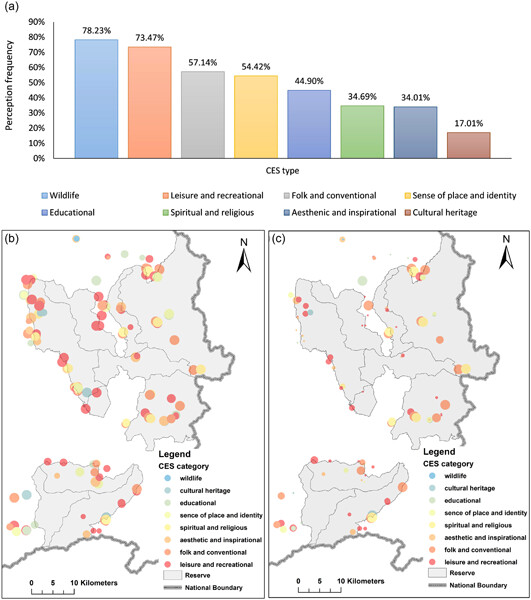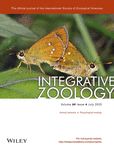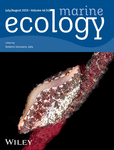Journal list menu
Export Citations
Download PDFs
ISSUE INFORMATION
OPINION
The evolutionary advantages of chelonians are making them vulnerable to extinction in the Anthropocene
龟类的演化优势反使其在人类世容易灭绝
- Pages: 109-111
- First Published: 06 October 2023
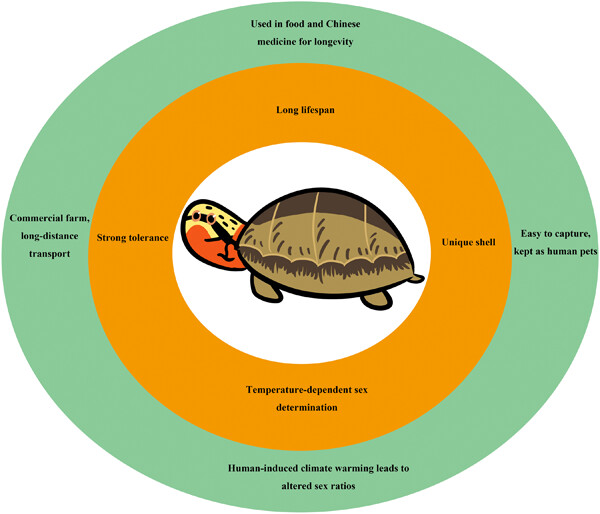
Chelonians have survived for more than 200 million years. The basic body form of the chelonian shell has been an obvious testament to the success of chelonians and their ability to survive millions of years of natural selection pressures. Unfortunately, their previously successful traits and strategies, such as having a shell, strong environmental tolerance, long lifespan, and temperature-dependent sex determination, are turning into disadvantages, particularly in the Anthropocene.
Spectacled Flying-fox conflicts—tucker, totem, taunt and threat
眼镜狐蝠的冲突——食物、图腾、挑战与威胁
- Pages: 112-118
- First Published: 16 October 2023
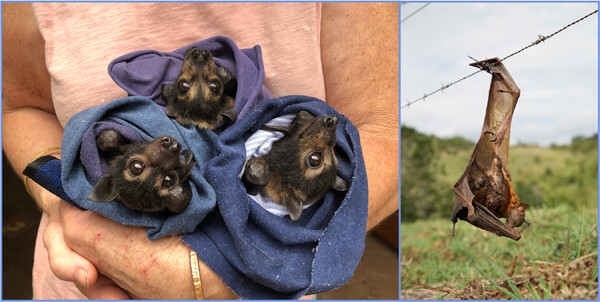
Flying-foxes worldwide have suffered population declines, including the Spectacled Flying-fox of north-east Australia which experienced a population crash of over 75% in <15 years. Persuading people that the Spectacled Flying-fox is important, even vital for the rainforests and tall forests that they love, takes engagement, narrative and story-telling. Bringing together communication specialists, social scientists and wildlife scientists is necessary to create these narratives in ways that people understand and accept, and that persuade them that the Spectacled Flying-fox is worth protecting.
RESEARCH ARTICLE
Can tropical nature reserves provide and protect cultural ecosystem services? A case study in Xishuangbanna, China
热带自然保护区能否提供和保护生态系统文化服务?来自中国西双版纳的案例研究
- Pages: 119-132
- First Published: 19 October 2023
SHORT COMMUNICATION
Enhancing the dung beetle iDNA tool for mammalian biodiversity monitoring and ecological studies
优化粪甲虫iDNA技术,用于哺乳动物多样性监测和生态学研究
- Pages: 133-139
- First Published: 08 November 2023
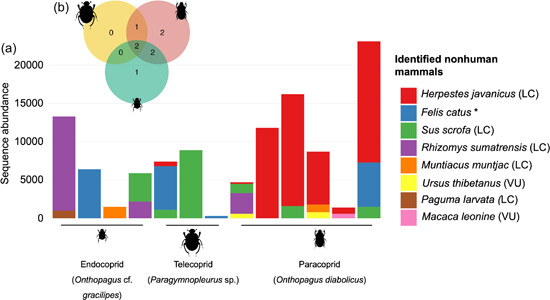
Invertebrate-derived DNA (iDNA) has enabled the identification and quantification of ecological interactions within trophic networks and its use in biodiversity assessment. The dung beetle iDNA currently uses live beetles. However, the effectiveness of the iDNA approach hinges on the successful detection of mammalian DNA from specimens collected via traditional pitfall traps with preservative solution, but this is yet to be investigated. Our study demonstrates that dung beetles obtained from baited pitfall traps with preservative solution retain mammalian DNA and shows the utility of dung beetle iDNA as an additional tool for biodiversity assessment. In addition, this approach enriches the scope from biodiversity monitoring to dung beetle trophic interaction studies.
REVIEW ARTICLE
Priorities for protected area expansion so nations can meet their Kunming-Montreal Global Biodiversity Framework commitments
甄选优先保护区域,确保各国履行昆明-蒙特利尔全球生物多样性框架的承诺
- Pages: 140-155
- First Published: 29 October 2023
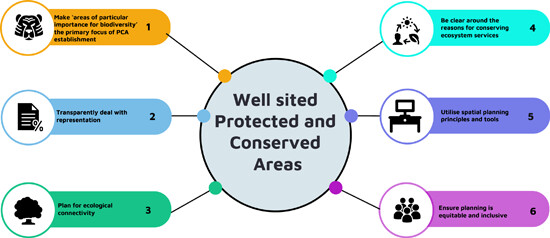
Here we provide a review of the type of areas that nations need to prioritise when implementing Target 3 that relates to area ‘quality’: areas of particular importance for biodiversity and ecosystem functions and services, are effectively conserved and managed through ecologically representative, well-connected and equitably governed systems. We show that data is available for 12 distinct biodiversity conservation and ecosystem service elements that can be mapped and, if conserved, will (with appropriate management) help meet the broad intention of Target 3. We highlight examples of the planning methods available that can be utilized so these areas can be targeted for protection. We discuss issues related to trade-offs regarding how to prioritise amongst them as well as to operationalise some of the vaguer concepts like ‘representation’ and ‘ecosystem functions and services’ so that they achieve the best outcomes for biodiversity.
PRACTICE AND POLICY
A 13-step framework for better integration of streamlined conservation research
开展保护研究的13步框架
- Pages: 156-164
- First Published: 06 November 2023
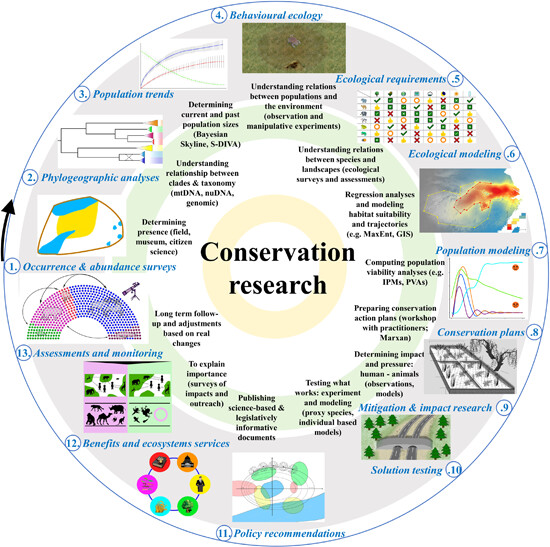
Integrated conservation research is gaining importance due to global environmental concerns, creating research opportunities. The challenge is to organize research findings originating from multidisciplinary approaches in a streamlined process that supports biodiversity conservation. This summary outlines a 13-step process that integrates various fields of conservation research, including ecology, behavior, mitigation plans, policy recommendations, and monitoring. The aim is to streamline conservation research for populations and enhance knowledge to support actionable conservation actions.





